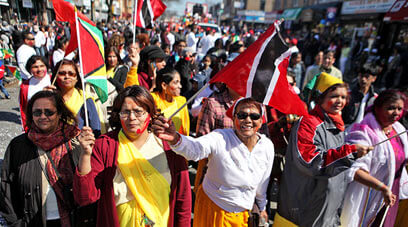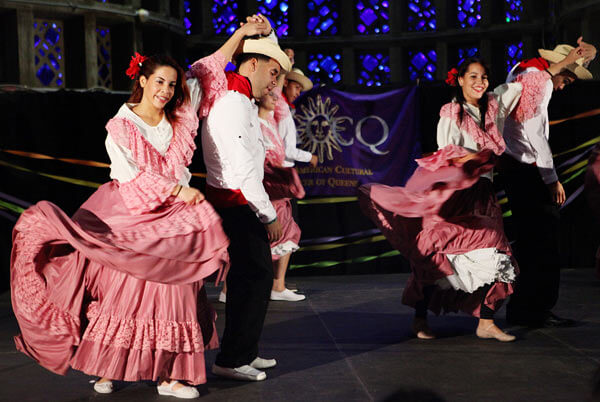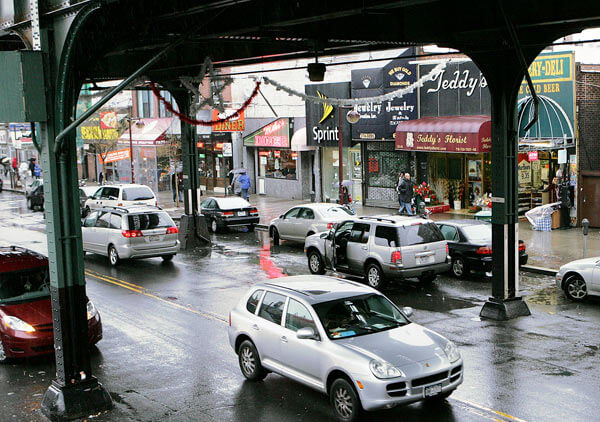By Kevin Zimmerman
If New York City is the center of America’s melting pot, then Queens provides the flavor.
Often called the most diverse county in the country if not the world, Queens’ most recent census numbers confirm its claims of diversity.
The 2010 U.S. Census categorizes the borough’s 2.2 million residents as 50 percent white, 24 percent Asian, 21 percent black and 3 percent mixed race. Of the 71 percent who identify their race as white or black, 28 percent picked Hispanic as their ethnicity. Today, almost half of Queens residents are foreign-born and 56 percent speak a language other than English at home.
Between 2000 and 2010, the borough saw a decrease in population, possibly because of undercounting of the immigrant communities, but estimates for 2012 show a slight rebound of a 1.9 percent increase. Changes in population fluctuated around the borough with Astoria, Howard Beach, Jackson Heights, Ridgewood, Springfield Gardens and Sunnyside all recording drops.
Although 2012 adjustments show the last census may not have gotten the numbers exactly right. Joe Salvo, director of the population division at the City Planning Department, believes census takers correctly recorded the number of housing units in the borough, but made other mistakes. He points to Astoria, which reportedly had a decline of nearly 15,000 residents between 2000 and 2010.
“There’s no way Astoria saw a 10 percent decline. Queens was under-counted in 2010,” Salvo said. “There was a lot of miscalculations of (housing) units. Census takers classified a lot of units as vacant. But that was not the case.”
But Salvo and Andrew Beveridge, chairman of the Sociology Department at Queens College, agree some neighborhoods are emptying out.
“You’ve got a place like Howard Beach and it has aged out,” Beveridge said.
The same goes for other areas such as Ridgewood, Salvo said.
When an area is labeled as aging out, it simply means its population is growing older and the new residents replacing them are taking their time moving into the area, Salvo said.
“These are neighborhoods that are in transition,” Salvo said.
Once they arrive, many of these new residents drastically change the look and feel of each neighborhood. Beveridge said the recent numbers show the borough continues to trend toward residents who identify themselves as Hispanic or Asian.
Corona had a 26.5 percent increase in its Hispanic population and a 9.7 percent jump in Asian residents. At the same time, the area’s white population shrank by more than 27 percent and the number of black residents dropped by more than 29 percent.
Salvo said the migration of Southeast Asian and Indian residents into southern and eastern Queens follows historic trends that nearly every immigrant group goes through. New groups arrive and form enclaves of their former homes in a region. As time passes and these newcomers assimilate, they spread out more, moving into areas that were once strongholds of Eastern Europeans, including Russian and Poles, who flock to the suburbs, Salvo said.
Queens College sociology professor Pyong Gap Min sees that pattern playing out in the Korean and Chinese populations of the borough.
“After several generations in Flushing, Koreans and Chinese are moving to Bayside,” Min said. “Between 2000 and 2010 there were a lot of Koreans and Chinese moving to Bergen County (N.J.) and Rockland County.”
Koreans and Chinese tend to move into new areas in clusters, Min said. The two groups feel comfortable living together and usually opt for predominately white neighborhoods, Min said.
The same cannot be said about Indian and Filipinos, who come from diverse cultures and tend to settle in such places when they arrive here, Min said.
“They feel comfortable in areas that are mixed,” Min said.
That helps to explain how neighborhoods like South Ozone Park saw a jump of 69.4 percent and Jamaica registered a 73 percent increase in Asian populations between the last two censuses, Min said.
South American and West Indian populations are also on the move across the borough, Salvo said.
Just as the Koreans and Chinese started their migrations to suburbia, Dominicans and Trinidadians have headed out to other areas, Salvo said. Ecuadorians and Guyanese have moved into those areas, turning a neighborhood like Richmond Hill into Little Guyana and keeping a strong Latino presence in Elmhurst.
“New groups are coming in, and in places like southeast Queens, they are taking an area that was once solidly black and turning it into West Indian,” Salvo said. “There is also an influx of immigrants from Africa settling into the same areas.”
Numbers in the Asian community jumped across the borough except in a handful of spots. Ridgewood, Forest Hills, which recorded a decrease of more than 29 percent in its Asian population, and Far Rockaway registered lower numbers of Asian residents in 2010 than 2000.
Far Rockaway also recorded the only increase in whites in the borough with a jump of nearly 11 percent, which puts it in a similar category with its neighbor Breezy Point. The community on the tip of the peninsula holds the distinction of being the city’s least diverse neighborhood. About 95 percent of its population is white.
Overall, Queens keeps attracting new residents from around the globe, which helps keep the borough vibrant, Salvo said.
“Queen remains an engine of growth for the city,” Salvo said. “We get revitalized neighborhoods in exchange for an injection of people into the workforce. We need people who do that.”
Beveridge cautioned about building too strong a case for growth on 2012 estimates because they are just that — estimates. He would rather look at the data from across the five boroughs to see how Queens fared overall. Those numbers seemed to suggest, despite population decreases across the Northeast and New England, the New York Metropolitan area continues to attract new residents.
“That is quite good,” Beveridge said. “It looks like we’ve returned to growth and Queens is growing fairly well.”


































